New family of launch vehicles in China

Last Saturday, the first launch of the Chinese carrier rocket "The Great March-7" of the middle class was successfully completed. This is the second rocket of the new family. And the secrecy of the Chinese astronautics gave us a surprise - it turns out, one of the payloads of this experimental launch was the layout of a new manned spacecraft.
Restore order
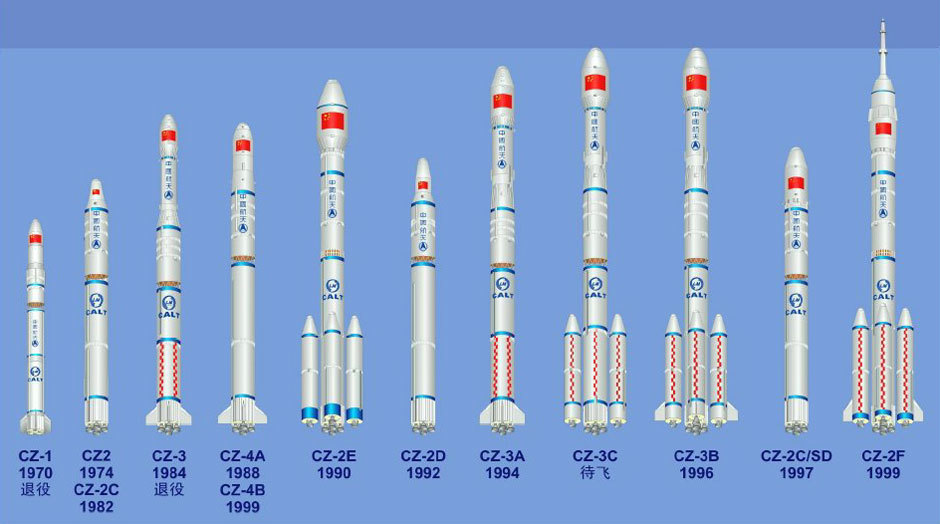
Under the common name "The Great March" (hereinafter referred to as CZ, Changzheng or LM), the Chinese combined a variety of missiles, so it is necessary to bring some order with the notation.
The Velyka -1 light launch vehicle launched the first Chinese satellite, while version 1D was offered for commercial launches. There were no customers, so the CZ-1 was launched only twice, and the CZ-1D tested the warhead three times.
The "Great March-2" is a family of missiles in itself. Light versions -2A, C, D (up to three tons per low orbit) and medium E (9200 kg per NOU) and F (8400 kg per NOU) were developed. The CZ-2E is no longer flying, and the -2F is the workhorse of the Chinese manned program.
The Great Trip-3 is a subfamily of light-middle class launch vehicles, from 5 to 13 tons into low orbit. More lifting options B and C are used to put satellites into geostationary orbit.
The “Great March-4” in various versions deduces 4-4.2 tons to a low orbit and is used for launches into the polar orbit.
')
All of the above rockets use heptyl and amyl as a fuel pair. Heptyl (asymmetric dimethylhydrazine) is a substance of the highest class of danger, poison, carcinogen, mutagen, teratogen, and, in general, a rare filth. Amil (nitrogen tetraoxide) is a dirty bit less nasty, poisonous just like chlorine, and plants grow better from it. These components were convenient for combat intercontinental missiles, because they could be stored in liquid form at room temperature, and the rocket could launch at any second. They are also very comfortable in space, because they do not require special thermal insulation. And if a few hundred kilograms of poison can still be survived on the upper stage, satellite, interplanetary vehicle, or spacecraft, then hundreds of tons of heptyl and amyl in the first stages of the launch vehicles is, according to modern concepts, bust. They are also more expensive than oxygen and kerosene, and require the production of special factories, which also have to take security measures, so as not to poison the staff and living in the district. Therefore, as in the case of our Proton, the days of these missiles are coming to an end. And their place will come more environmentally friendly rockets:
The Great March-11 is a new light-duty solid-fuel booster that first flew in 2015 and has a payload of 700 kg in a low orbit.
And, finally, a new family of oxygen-kerosene rockets:
The Great March-6 is a light-class launch vehicle (one ton per polar orbit, some at low near-earth orbit). First flew in September 2015.
The Great March-7, a medium-class launch vehicle, 13.5 tons into low orbit, first flew on Saturday.
The Great March-5 is a heavy launch vehicle, 25 tons into low orbit, the first flight is expected in the second half of this year.
In addition, it is known that the CZ-9 is a project of a 130-ton super-heavy rocket.
And this chart shows the years of service of each type of missile.
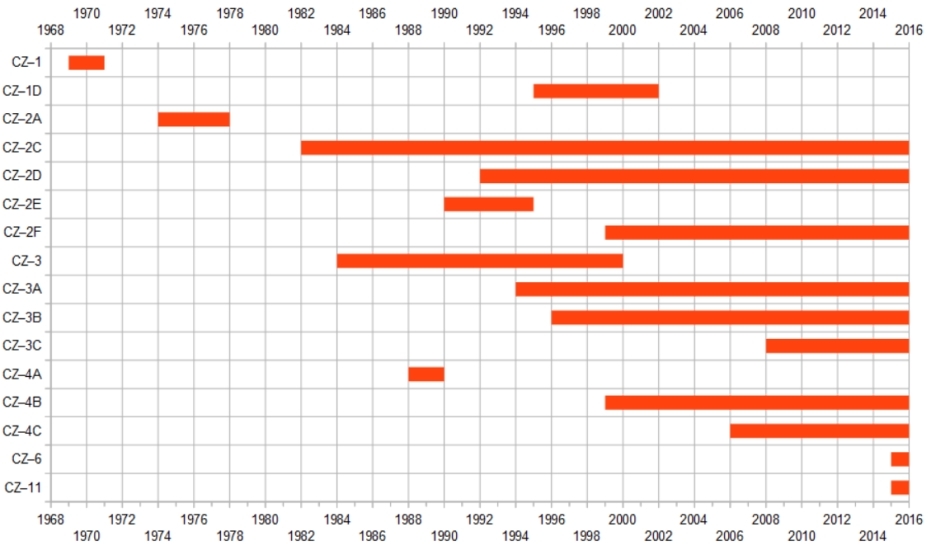
Relatives in the engines
Why these three rockets can be attributed to one family? The fact is that they use the same engines. Since the two thousand years, China has been developing the technology of closed-cycle liquid rocket engines. As a result, two oxygen-kerosene engines were created: the YF-100 and the YF-115.

YF-100 - engine 136 tons in a vacuum. It is said that Yuzhnoye Design Bureau (Ukraine) in the early 1990s sold documentation on the second-stage Zenith RD-120 engine to China, and based on it, the Chinese began to make closed-cycle rocket engines. Even if it was really the case, the YF-100 is not a direct copy, its thrust is noticeably greater than 85 tons of RD-120, and the specific impulse is lower.
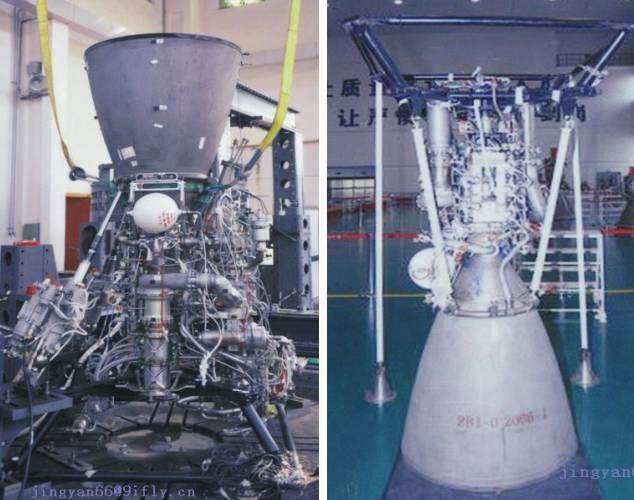
The YF-115 is an engine of 15 tons, with a specific impulse of 341 seconds, higher than the YF-100 (335 seconds) and below the RD-120 (350 seconds).
The use of a closed cycle, in which the exhaust from the gas generator is fed into the combustion chamber, has allowed to obtain high values of specific impulse, which put these engines to a good world level. For comparison, the highest specific impulse to the oxygen-kerosene engines of the RD-0124 (359 seconds), and the specific impulse Merlin Vacuum on the SpaceX site is set to 348 seconds.
"Great hike-6"
If we put one YF-100 on the first stage, one YF-115 on the second stage and add the third stage to take the payload to the sun-synchronous orbit, we will get the CZ-6 launch vehicle. Small, with a starting weight of just 103 tons and a maximum diameter of 3.35 m, the “Great Trek-6” is designed for easy transportation:

And simple maintenance:
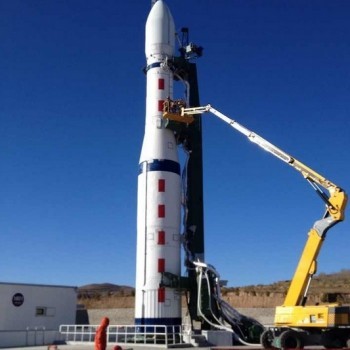
On September 15, the CZ-6 successfully launched 20 small satellites into a sun-synchronous orbit:
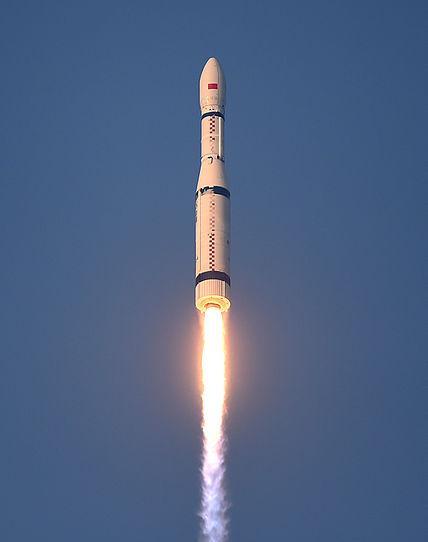
"Great hike-7"
If we take 2 YF-100s to the central unit (second stage), add four side units (first stage) with one YF-100 each, and put four YF-115s on the third stage, we get “Great campaign-7”. The starting mass of 594 tons will allow to raise 13.5 tons to a low orbit. The maximum block diameter of 3.35 m makes it easy to transport the missile by road from the port:

Then collect in the assembly and test complex and take to the start:
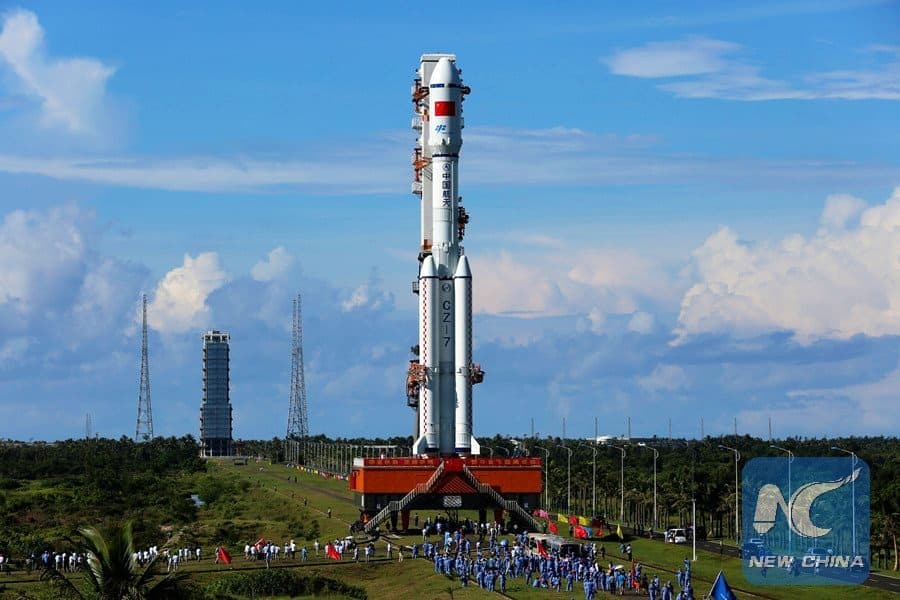
Photo Saturday launch:
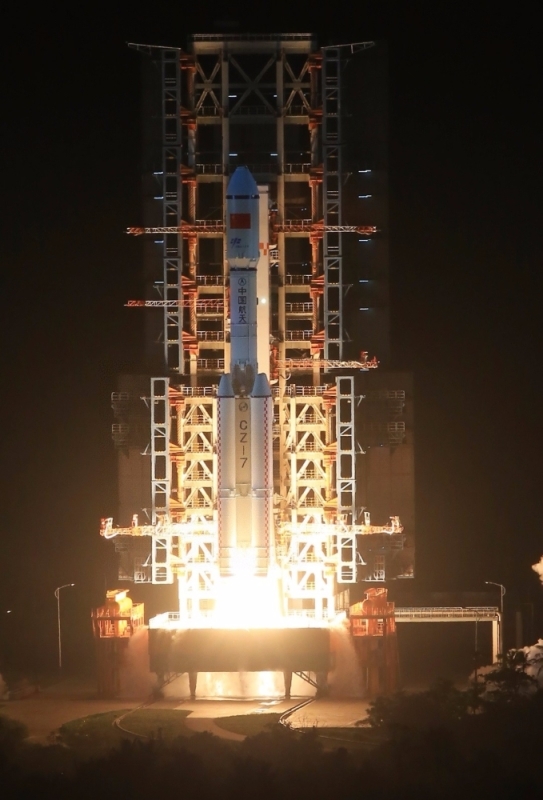
Video:
It is very curious that the rocket is in fact closer to the two-stage one. From the video it follows that the second stage is reset only 14 seconds after the separation of the four blocks of the first stage, this is very unusual and very inefficient. Maybe YF-100 can not work longer than three minutes?
"Great hike-5"
And finally, if we take the first stage of four blocks with two YF-100s on each, and put the oxygen-hydrogen engines (YF-75 and YF-77) on the second and third stages, we get the rocket "Great campaign-5 "With a loading capacity of 25 tons to a low orbit. She knows that the second and third stages will have a diameter of 5.2 m, and the launch mass of the rocket is estimated at 867 tons. Already have a photo of the launch of the rocket layout at the start:

Unknown ship
Twenty hours after launch, the main payload landed, and it turned out that it was a test apparatus from which they would develop the wrong cargo, not the manned ship.
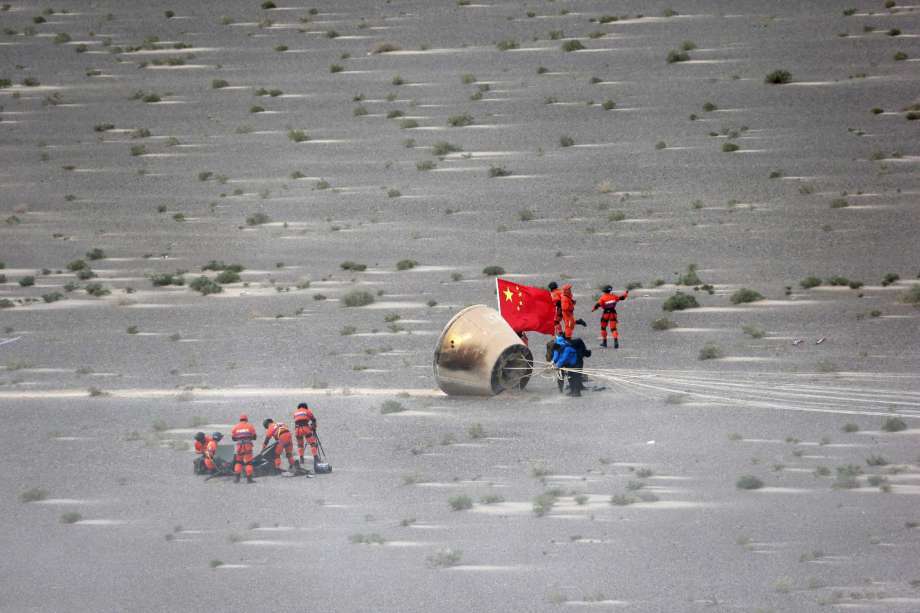
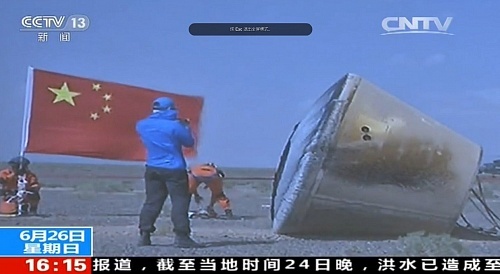
Because of Chinese secrecy, it is completely incomprehensible for the time being how it is called and how it will be tested further. Judging by the size, this is most likely a scale model, smaller than the original. Also, judging by the photos and videos, most likely in this flight on the model there were no engines of a soft landing (or another system for mitigating the impact of the ground), which should be on a full-sized ship.
Conclusion
We should also mention the phrase in one of the interviews that in the five-year period of 2016–2021 a hundred and fifty missiles of this family will be launched, which gives an annual number of 30 launches. In this case, China will compete for first place in the number of launches per year (in this parameter Russia has been the leader in recent years, but the United States is starting to breathe in the back of the head with the launches of “new private traders”). A separate question is where and what kind of payload will China find on these launches?
Source: https://habr.com/ru/post/395447/
All Articles